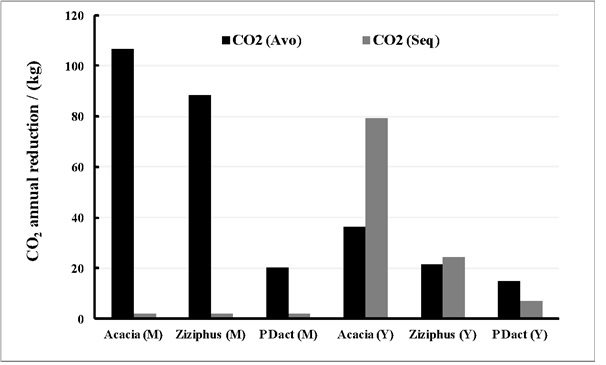Authors: Rima J. Isaifan1, Richard W. Baldauf2
1Division of Sustainable Development (DSD), Hamad Bin Khalifa University (HBKU) / Qatar Foundation (QF), Education City, P.O. Box 5825, Doha, Qatar.
2Office of Research and Development, United States Environmental Protection Agency, The United States
Full Citation: Rima J. Isaifan, Richard W. Baldauf, Estimating economic and environmental benefits of urban trees in desert regions, Frontiers in Ecology and Evolution, in press, doi: 10.3389/fevo.2020.00016
Abstract:
Air pollution in urban areas has drawn significant attention from researchers, urban planners and policy makers due to the rapid increase in industrial, transportation and construction activities and its link with adverse human health effects. Several mitigation measures have been proposed recently including planting trees for abatement of air pollution. Vegetation can remove particulate matter (PM) and gaseous pollutants by deposition and absorption through leaves and branches. Trees also convert carbon dioxide into oxygen through the process of photosynthesis. In urban areas, vegetation has also been reported to have significant positive impacts on raising property values, intercepting storm water runoff and improving air quality. Moreover, trees provide various ecosystem services in urban contexts such as the regulation of temperature by providing shading and thermal comfort.
Despite these economic and environmental benefits, few studies have considered the efficiency of different urban tree species to reduce air pollution in desert cities experiencing high PM concentrations due to anthropogenic and natural sources along with providing other positive ecosystem services. In general, the ability of trees to improve air quality varies because of different plant characteristics. The effect of leaf surface structure, for instance, has been shown to have a major influence on PM capture and removal.
In this article, we estimated the economic and environmental benefits of three tree species typical for desert regions: Acacia tortilis, Ziziphus spina-christi and Phoenix dactylifera. The benefits varied by species with Acacia tortilis having the highest overall benefits, mostly because of its large leaf surface area and canopy shape. Mature trees tended to be more beneficial than smaller, young trees for improving environmental conditions. The location of trees had minimal impact on the overall economic value when considering regional benefits, although locations close to air pollution sources may provide additional air quality benefits. This assessment provides urban planners, foresters, and developers in desert regions with information needed to make informed decisions on the economic and environmental benefits of urban tree planting.
 Annual CO2 reduction by trees in urban desert areas. Note: “M” indicates mature trees with trunk diameter of 45 in. or greater, “Y” indicates young tress with trunk size of less than 10 in, “P Dact” indicates Phoenix Dactylifera [the article].
Annual CO2 reduction by trees in urban desert areas. Note: “M” indicates mature trees with trunk diameter of 45 in. or greater, “Y” indicates young tress with trunk size of less than 10 in, “P Dact” indicates Phoenix Dactylifera [the article].
